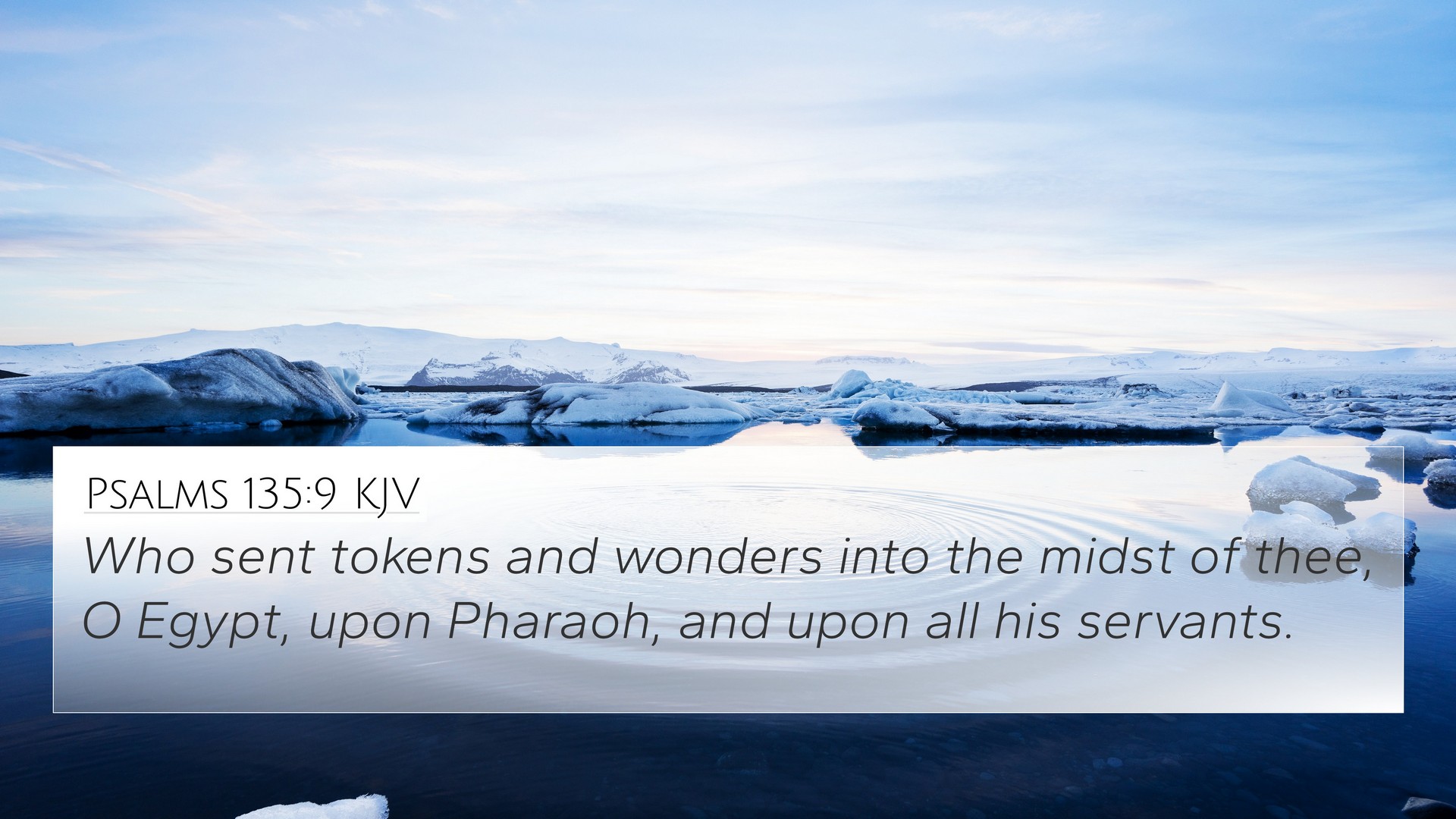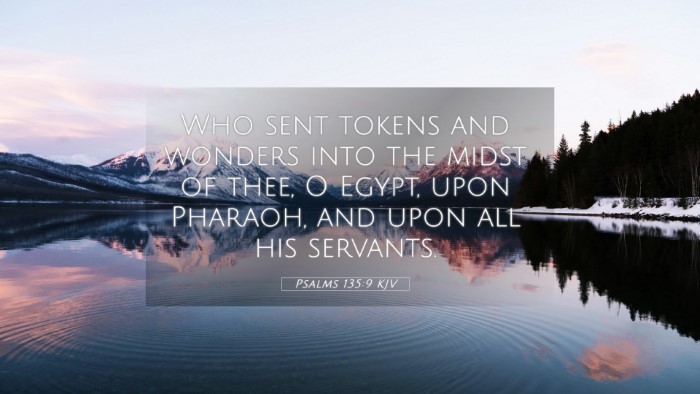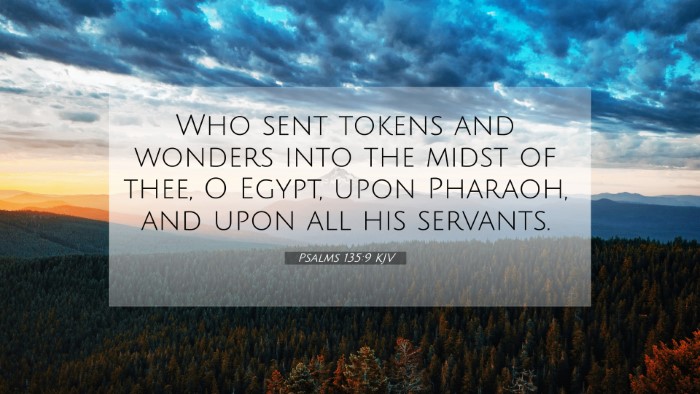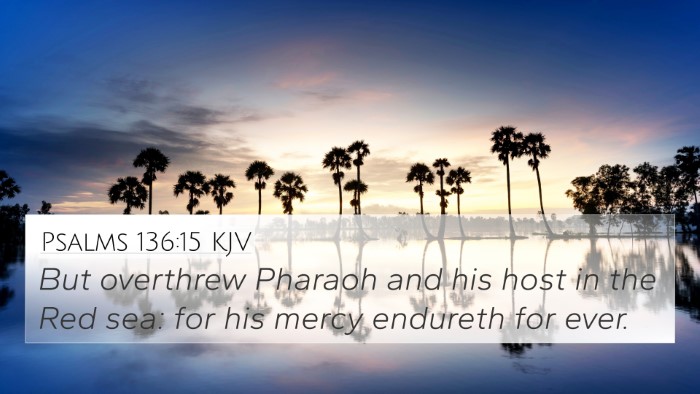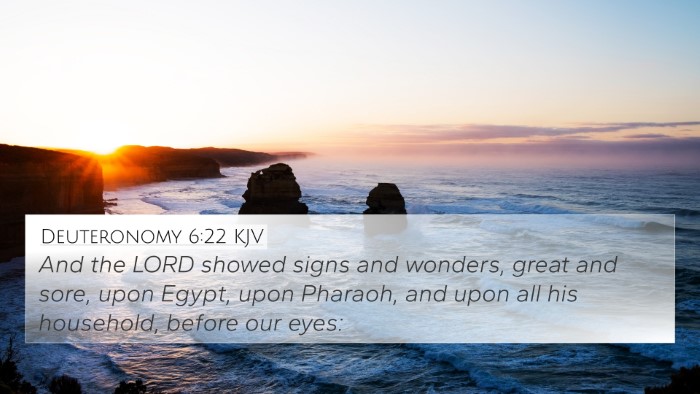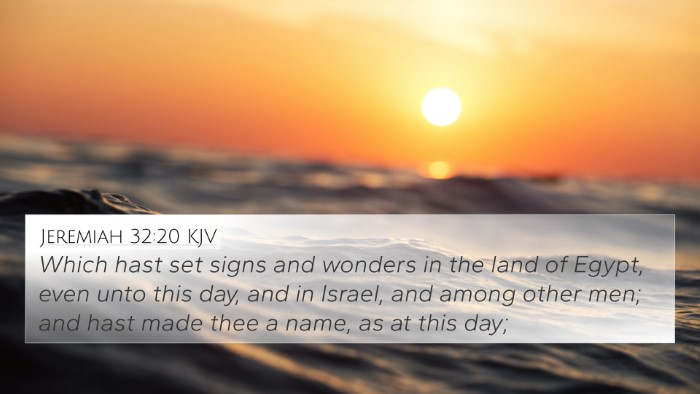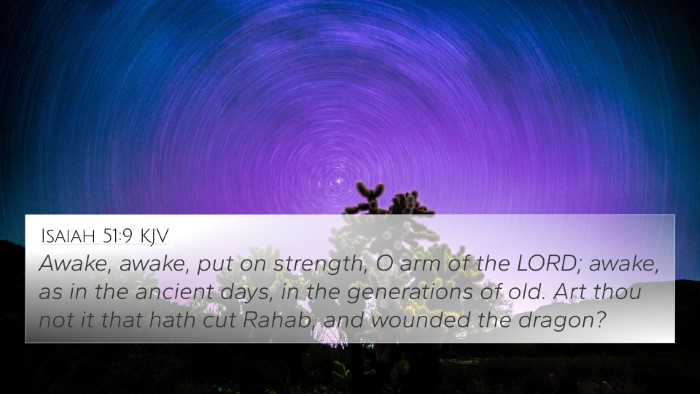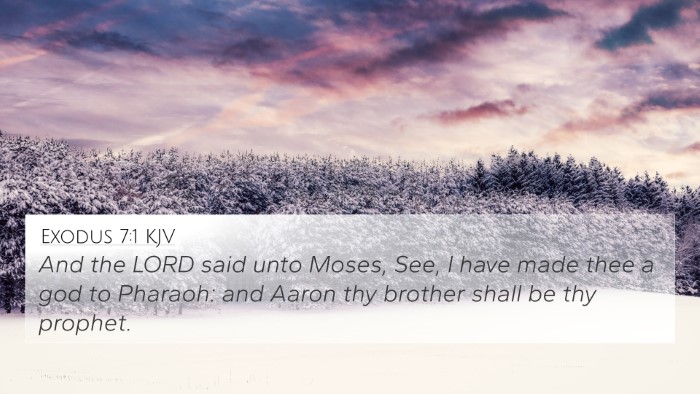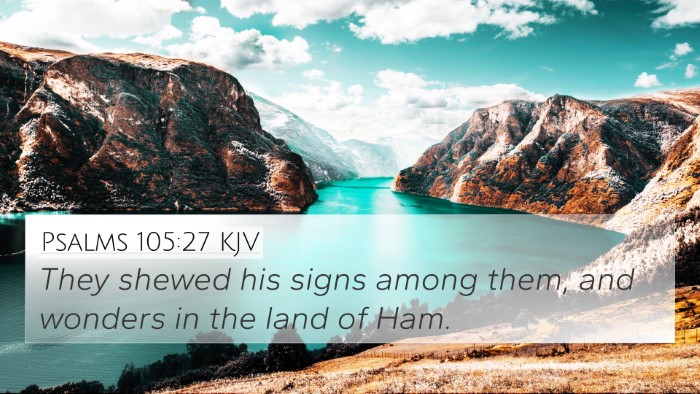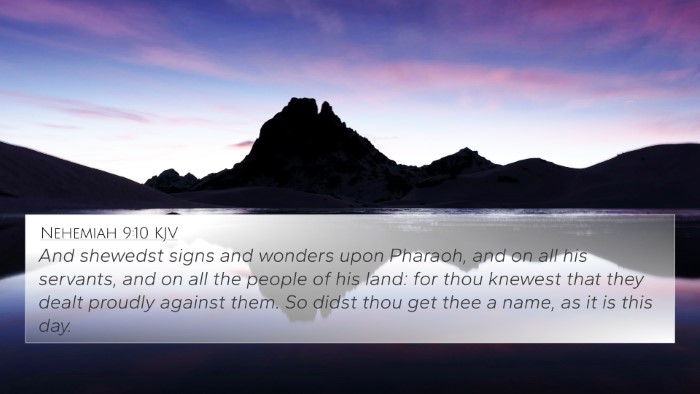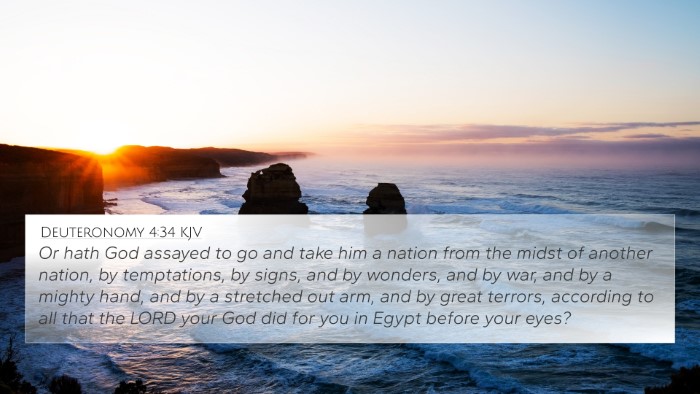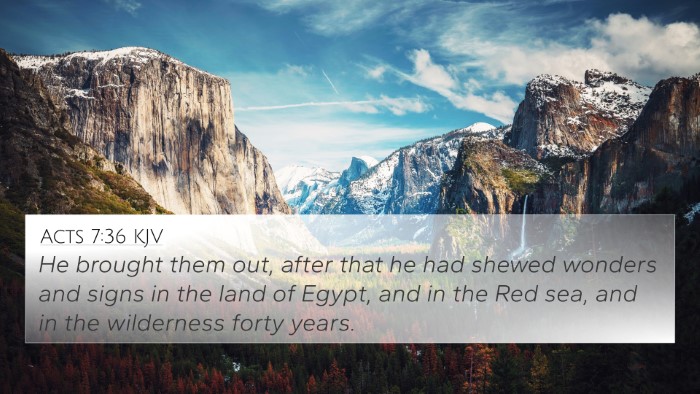Psalms 135:9 - Understanding the Verse
Verse: "Who sent tokens and wonders into the midst of thee, O Egypt, upon Pharaoh, and upon all his servants."
Summary of Insights from Public Domain Commentaries
Matthew Henry's Commentary
Matthew Henry explains that this verse refers to the mighty acts of God during the Exodus from Egypt. It highlights God’s sovereignty over Pharaoh and the Egyptians, emphasizing that the plagues and wonders were signs of divine judgment and mercy. The intent was to show the power of God and to demonstrate that the Israelites were chosen to be delivered from oppression.
Albert Barnes' Commentary
Albert Barnes elaborates on the idea that the "tokens and wonders" mentioned are specific miracles that took place in Egypt, intended to convince both Egyptians and Israelites of God's authority. He points out these acts were not just for punishment but also to glorify God and reveal His character to a nation that had turned its back on Him.
Adam Clarke's Commentary
Adam Clarke interprets this verse by emphasizing the historical context of the Israelites' suffering in Egypt. He notes that God's signs and wonders served as a means of deliverance and indicated His covenantal relationship with Israel. Clarke highlights the notion that the signs were not only demonstrations of power but also served to strengthen the faith of those who witnessed them.
Cross-References and Thematic Connections
This verse is deeply interconnected with several other Biblical passages that discuss God's interventions, signs, wonders, and the theme of deliverance. Here are some noteworthy cross-references:
- Exodus 7:3-5: God's intention to demonstrate His power through signs before the Egyptians.
- Exodus 14:30-31: The culmination of God's signs during the crossing of the Red Sea.
- Psalm 78:43-51: A recollection of God's miracles in Egypt during the Exodus.
- Deuteronomy 4:34: God's miraculous acts in Egypt, emphasizing His power against the Egyptians.
- Acts 7:36: Refers to Moses and God’s signs and wonders during the Exodus, connecting the historical events to the early Church.
- Romans 9:17: A reference to Pharaoh and the purpose of God’s signs to demonstrate His power and justice.
- Malachi 1:14: Speaks of God's greatness and His attributes, echoing the themes of divine intervention seen in Psalms 135:9.
Thematic Bible Verse Connections
The themes of divine sovereignty, miraculous intervention, and deliverance are prevalent throughout the Scriptures. Connecting these themes can help in understanding the unifying narrative of God's plan for His people:
- Divine Sovereignty: Reflected in verses such as Proverbs 21:1 and Job 42:2, showcasing God’s control over worldly leaders.
- Miracles and Signs: John 2:11 shows Jesus performing wonders, echoing God's previous acts.
- Deliverance: A consistent theme in Isaiah 43:2 and Luke 4:18, which showcases God’s nature to save His people.
Understanding Biblical Themes through Cross-References
Cross-referencing can enhance the understanding of verse meanings. Here are tools and methods to utilize in this process:
- Bible Concordance: A helpful resource to find specific words and their occurrences throughout the Bible.
- Bible Cross-Reference Guide: Utilize this for easy navigation between related scriptures.
- How to find Cross-References in the Bible: Look for similar themes, topics, or narratives across different books.
- Inter-Biblical Dialogue: Exploring connections between Old Testament prophecies and New Testament fulfillments enhances understanding.
Conclusion
In sum, Psalm 135:9 serves as a critical reminder of God’s mighty acts and His overarching plan for deliverance. By utilizing various scripture passages that cross-reference this theme, believers can gain a broader understanding of God's character and His work throughout the Bible. Engaging with the Bible through the lens of cross-referencing enriches both personal study and collective understanding within faith communities.
